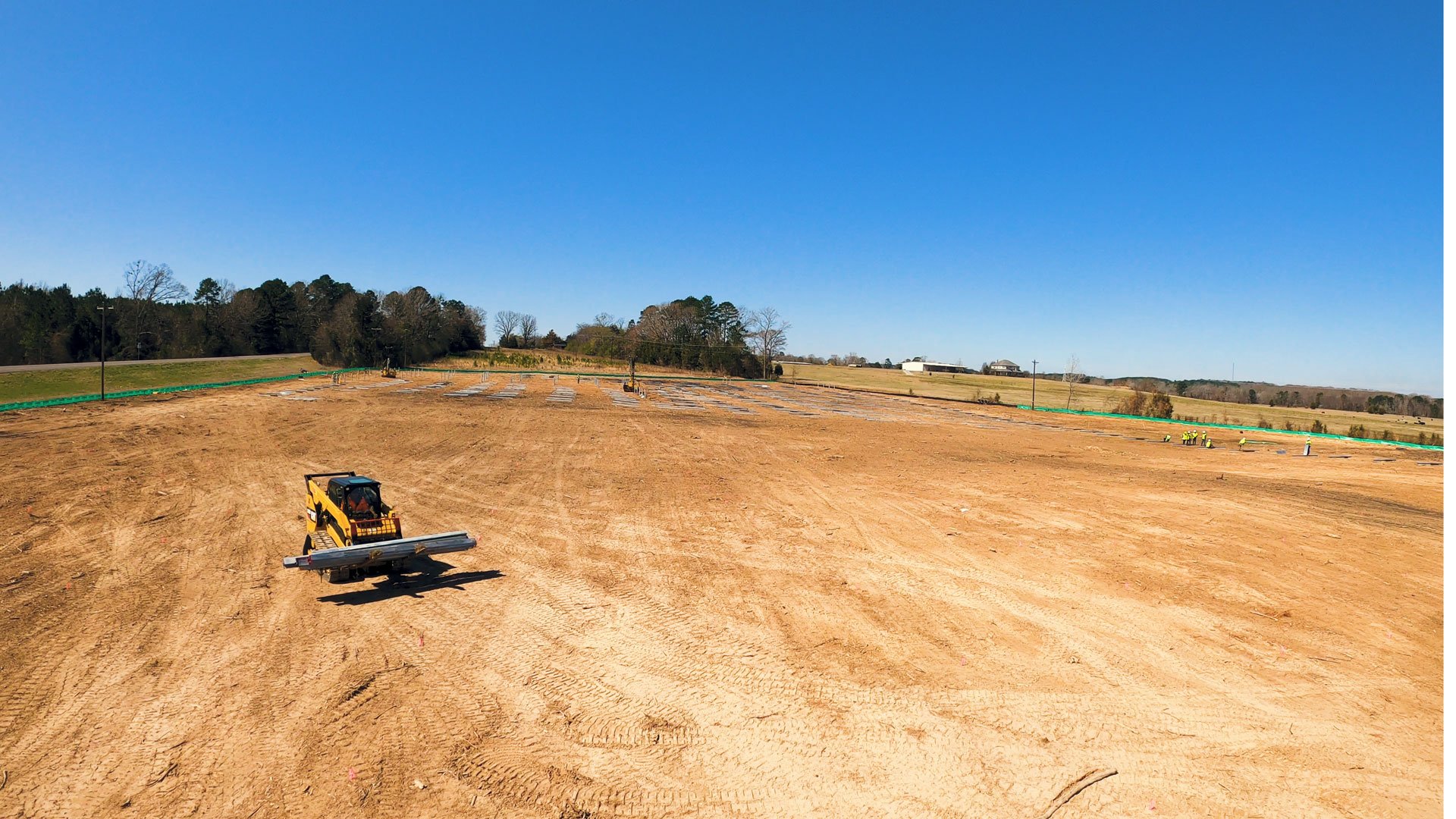Site Access
The first step is ensuring safe access to the site for clearing and construction crews. The complexity of site access solutions depends on the location, terrain, and typical weather conditions. Potential solutions include:
- Clearing trees, shrubs, and other obstructions on the access right of way
- Installing access matting to create temporary roads where necessary
- Grading and filling to create temporary and/or permanent gravel roads
- Installing temporary bridges or permanent culverts
In addition to providing safe access, any solution you choose should have the end of the project in mind. Consider the potential impact on the environment, how the road will be removed (if it is not permanent), and what restoration steps will be necessary.

Clearing
Installation of ground-mounted solar panels requires a level surface that is clear of obstructions. Clearing the site of trees, stumps, and other vegetation allows construction crews to safely and efficiently install panels. The scope of clearing will depend on the characteristics of the site, but could include:
- Cutting and chipping
- Grinding stumps
- Hauling and disposing debris
- Piling and burning
- Mowing brush removal
- Managing vegetation
When possible, using mechanized equipment is typically the most efficient method of clearing. However, in some cases and in some areas, hand-clearing may be necessary. Regardless of the type of clearing required, it’s essential that the crews doing the work are trained and aware of any environmental considerations specific to the site.

Civil Construction
Civil construction includes implementing the measures outlined in the SWPPP for erosion control and shaping the landscape in preparation for solar installation.
Depending on the characteristics of the site, erosion control tools and measures might include:
- Silt fencing
- Erosion control mats or blankets
- Riprap
- Dewatering
- Seeding and stabilization
- Sod installation
- Concrete wash-out systems
- Gravel entrances
After clearing, civil construction might also include cutting, filling, and grading to create a level surface for panel installation.
Mechanical Construction
Ground-mounted solar arrays are installed at grade on galvanized steel and/or aluminum support structures. The support structures are bound to the earth using foundations consisting of driven piles, helical piles, ground screws, concrete footings, concrete ballast, or a mixture of these components. The type of foundation used depends on soil properties and the geometry of the foundation.
The mechanical construction phase includes creating the foundations for the support structures—most frequently with pile driving. Pile driving requires accurate distance, spacing, level, and depth of the piles. In rocky areas, pre-drilling may also be required to get the piles into the ground. After the pile foundations have been installed, panel racks can be mounted onto them. In some installations, trackers are installed prior to the solar panels. The next step is to carefully install panels on the racks either manually or with heavy equipment that raises and positions the panels.
Once all of these site preparation and construction steps have been completed, electrical crews can come in to complete the installation.



